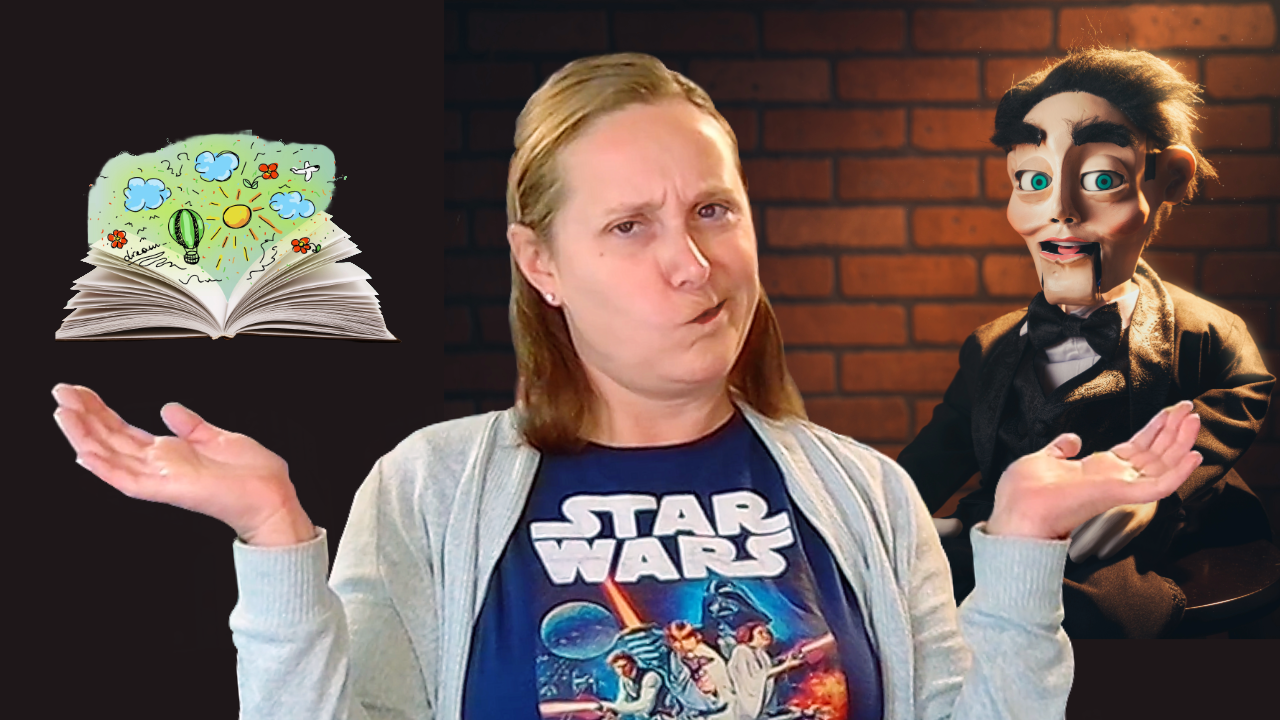
Creating a picture book is a journey, one that starts with a simple idea and grows into a world filled with characters, emotions, and life lessons. For me, that journey began with a story that had been simmering in my heart for years. I wrote, edited, and sketched countless ideas, refining them until they captured what I wanted to share. But it wasn’t until I created my finished picture book dummy that I could finally see the full picture. I’ll guide you through the final steps of this creative journey, showing you how to bring your own story to life through a polished, ready-to-share picture book dummy.
If you’ve been following along with my series, I had made thumbnails of each of my book’s pages. The first step to making a dummy is to pick your best thumbnails – the ones that clearly communicate the story – and lay them out, one thumbnail per page of your book.
From Thumbnail to Dummy
For my first layout of thumbnails I just used a page in photoshop and lined up all my favorite thumbnails next to each other. I was checking for story-telling and for variety in the images. When I was happy with the ones I picked, I took each thumbnail and made an individual image for it in Photoshop. This sketch was more finished, but still just rough line-work.
My next step was to bring each image into a document in InDesign, and add the text onto the pages as well. I’m going to show you what that first dummy looked like – even though I am pretty embarrassed by parts of it. I want you to see my progression as an illustrator through this process as well.
What My Dummy Looked Like
You can take a look at this dummy, and then take a look at my finished book in this other video. There were a lot of changes from this point as well. My story changed, my pictures changed quite a bit, and even what my main character looked like changed.
When I was creating my dummy, it was both thrilling and nerve-wracking to see my story start to take shape. I remember looking through the rough sketches, zooming out to see if the flow of the story made sense. The line drawings were simple, yet they captured the essence of each scene. I wasn’t aiming for perfection—just a clear story. The goal was to create a blueprint of the book, one that others could follow easily and feel the rhythm of the story as they turned each page.
My Critique Group
I can’t tell you enough how important my critique group was in the process. I brought what seemed like a clear story to them, and they found areas that were confusing. A critique group is amazing because they support you and are honest about what doesn’t work. You can’t know what others think unless you ask them.
For example, I used to have the power going out because the trucks crashed into a power line and had an accident. My critique group found this confusing and thought it raised a lot of unanswered questions, so that part of the story changed.
How Finished Should the Line Drawings Be?
There’s a delicate balance between too rough and too polished when it comes to your line drawings. My thumbnails were obviously too rough. I found that for me, it was about ensuring the story was clear, the emotions were there, and the compositions were strong. Think of these sketches as your roadmap—they don’t need to have every detail worked out, but they should guide the viewer through the journey your characters are on. It’s okay if they’re a bit loose; what matters most is that the narrative is strong and the pacing feels right.
Three Pages with Finished Art:
As I worked on my book, I remember the excitement—and pressure—of choosing which three illustrations would be my ‘hero’ images, the ones that would best showcase my style and the heart of my story. These three finished illustrations were more than just pictures—they were the moments that made the story come alive. I have to admit that I probably didn’t choose the best ones: scenes that were pivotal to the narrative, where the emotions were high, and the stakes were clear. I felt nervous about my illustration skills and chose as least one easy image. For you, think about the moments in your story that you want to leap off the page, the scenes that make your readers stop and feel. These are the images that will give agents and publishers a glimpse into the world you’re creating. To sell your book, make your best images finished images for your dummy.
Do NOT finish all the images in your dummy if you are trying to sell it to a publisher through an agent. The art director and publisher will have input on your images, and they only want to see three finished pieces to see how you plan on illustrating the rest.
I’m going to share with you two versions of my dummy. I was still figuring out my illustration style, and my first dummy was finished in a watercolor and linework style. My second dummy I created in my current art style of cut-paper, and I redid both my finished illustrations and the rough drawings as well.
Getting Ready to Query
Once I had my dummy laid out in InDesign with three finished images and the rest in a decently polished line drawing, I saved my file as a PDF to send out to agents as part of my query. I had crossed a major milestone in my creative journey. This was the point where the hard work of creating turned into the equally challenging work of sharing and pitching. It was time to find the right partners who would help bring my story to the world.
The next step in this journey is querying—finding the right people to help bring your story to life. In my next post, I’ll walk you through the querying process, sharing tips and strategies that helped me navigate this crucial stage. If you’re looking for an agent or a publisher, this next part of the journey is where your hard work can start to pay off.
Creating a finished picture book dummy is more than just a step in the process—it’s a culmination of your journey as a storyteller and illustrator. It’s where your vision takes a tangible form, ready to be shared with others. As you prepare your own dummy, remember that this is a huge achievement, one that brings you closer to seeing your book on the shelves and in the hands of readers. Keep going—you’ve come so far, and the finish line is in sight!
Storm Trucks Available Now
My book, Storm Trucks, is available to pre-order through Kickstarter right now as a beautifully printed hardback - and there are bonus items available to go with it: bookmarks, stickers, and an ebook version. The link is below so you can see all the goodies and be part of making this book a reality!




0 Comments